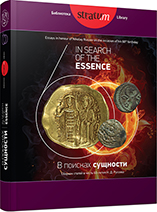О «кочевнических юртах» на памятниках оседлого населения лесостепи (V—VIII вв.)
On the “Nomadic Yurts” on the Sites of the Settled Population of the Forest-steppe (5th—8th Centuries)
Author(s): Michel Kazanski
Subject(s): History, Archaeology, Middle Ages, 6th to 12th Centuries
Published by: Издательский дом Stratum, Университет «Высшая антропологическая школа»
Keywords: Eastern Europe; Early Medieval Period; forest-steppe; nomads; Slavs; yurts
Summary/Abstract: The finds of the so-called yurt-like structures on the sites of the forest-steppe settled population of the 5th—8th centuries are considered in this article. It is believed that these buildings reflect the contacts of steppe nomads with settled barbarians, primarily with the Slavs. Most of the structures considered — Ksizovo 19, Bogatoe, Osipovka, Dereyvka, Budishchi, Lug-I — are stationary semi-dugouts, most often of a pole-like frame structure, with or without a hearth. Such buildings may belong to the nomadic population who mastered the principles of construction of permanent housing. With the yurts, they are approximated by a rounded shape and a hearth in the center. But the Slavs throughout their history were settled people. Such structures are well known for the cultures of the Roman period, in particular for Kiev culture, which is related to the ancestors of the Slavs. It can be assumed that the rounded frame-adobe buildings with a deep foundation, known on the Slavic sites of the early Middle Ages, go back to the traditions of Kiev culture. Only one structure from the settlement of Chernechina can be attributed to the yurt-like structures from the Penkovka settlements. Perhaps it testifies to the incorporation into the Slavic environment of certain groups of nomads, passing on to settled life. Also, a structure from the settlement Stetsovka is comparable with the yurt-shaped buildings. Most likely, this settlement was populated by a mixed group — Slavic and foreigners from the south. This composition reflects a complex ethno-cultural situation that emerged in the Middle Dnieper region after disappearance of the Penkovka culture in the 630s — 660s.
Book: В поисках сущности
- Page Range: 73-86
- Page Count: 14
- Publication Year: 2019
- Language: Russian
- Content File-PDF

